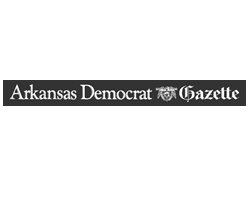US' Coal Push Runs Afoul of Drop in Demand

October 5, 2025 - U.S. officials in the coming days are set to hold the government's biggest coal sales in more than a decade, offering 600 million tons from publicly owned reserves next to strip mines in Montana and Wyoming.
The sales are a signature piece of President Donald Trump's ambitions for companies to dig more coal from federal lands and burn it for electricity. Yet most power plants served by those mines plan to quit burning coal altogether within 10 years, an Associated Press data analysis shows.
Three other mines poised for expansions or new leases under Trump also face declining demand as power plants use less of their coal and in some cases shut down, according to data from the U.S. Energy Information Administration and the nonprofit Global Energy Monitor.
Those market realities raise a fundamental question about the Republican administration's push to revive a heavily polluting industry that long has been in decline: Who's going to buy all that coal?
The upcoming lease sales in Montana and Wyoming are in the Powder River Basin, home to the most productive U.S. coal fields.
Officials say they will go forward beginning Monday despite the government shutdown. The administration exempted from furlough those workers who process fossil fuel permits and leases.
Democratic President Joe Biden last year acted to block future coal leases in the region, citing their potential to make climate change worse.
Trump rejected climate change as a "con job" during a Sept. 23 speech to the U.N. General Assembly, an assessment that puts him at odds with scientists. He praised coal as "beautiful" and boasted about the abundance of U.S. supplies while deriding solar and wind power.
In response to an order from Trump on his first day in office in January, coal lease sales that had been shelved or stalled were revived and rushed to approval, with considerations of greenhouse gas emissions dismissed.
The AP's finding that power plants served by mines on public lands are burning less coal reflects an industrywide decline that began in 2007.
Energy experts and economists expressed doubt that coal would ever reclaim dominance in the power sector. Interior Department officials did not respond to questions about future demand for coal from public lands.
But it will take time for more electricity from planned natural gas and solar projects to come online. That means Trump's actions could give a short-term bump to coal, said Umed Paliwal, an expert in electricity markets at the University of California, Berkeley.
"Eventually coal will get pushed out of the market," Paliwal said.
The coal sales in Montana and Wyoming were requested by a Navajo Nation-owned company. The Navajo Transitional Energy Co. (NTEC) has been one of the largest industry players since buying several major mines in the Powder River Basin during a 2019 bankruptcy auction. Those mines supply 34 power plants in 19 states.
Twenty-one of the plants are scheduled to stop burning coal in the next decade. They include all five plants using coal from NTEC's Spring Creek mine in Montana.
In filings with federal officials, the company said the fair market value of 167 million tons of federal coal next to the Spring Creek mine was just over $126,000.
That is less than one-tenth of a penny per ton, a fraction of what coal brought in its heyday. By comparison, the last large-scale lease sale in the Powder River Basin, also for 167 million tons of coal, drew a bid of $35 million in 2013. Federal officials rejected that as too low.
NTEC said the low value was supported by prior government reviews predicting fewer buyers for coal. The company said taxpayers would benefit in future years from royalties on any coal mined.
The largest U.S. coal company has offered a more optimistic take on coal's future. Because new nuclear and gas plants are years away, Peabody Energy suggested in September that demand for coal in the U.S. could increase 250 million tons annually -- up almost 50% from current volumes.
Peabody's projection was based on the premise that existing power plants can burn more coal. That amount, known as plant capacity, dropped by about half in recent years.
"U.S. coal is clearly in comeback mode," Peabody's president, James Grech, said in a recent conference call with analysts. "The U.S. has more energy in its coal reserves than any nation has in any one energy source."

